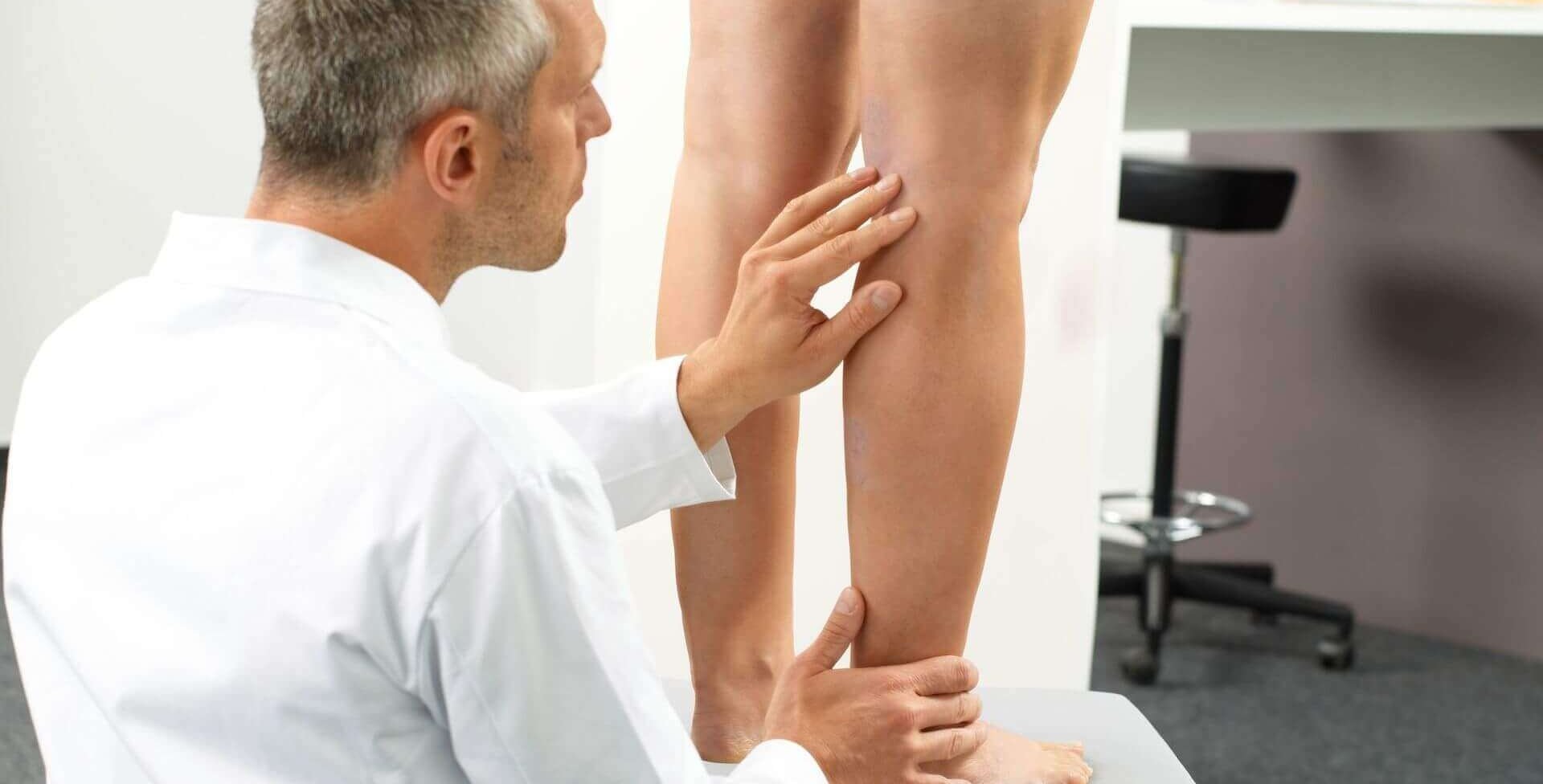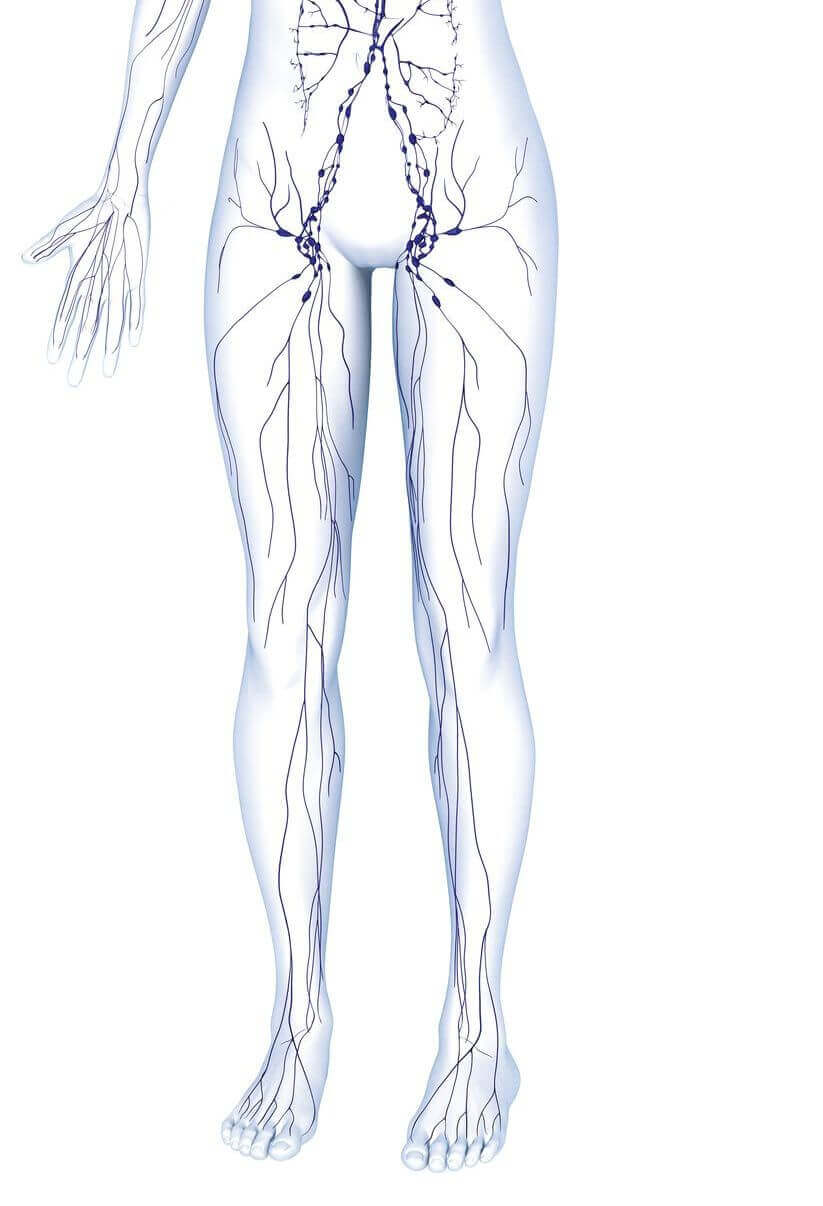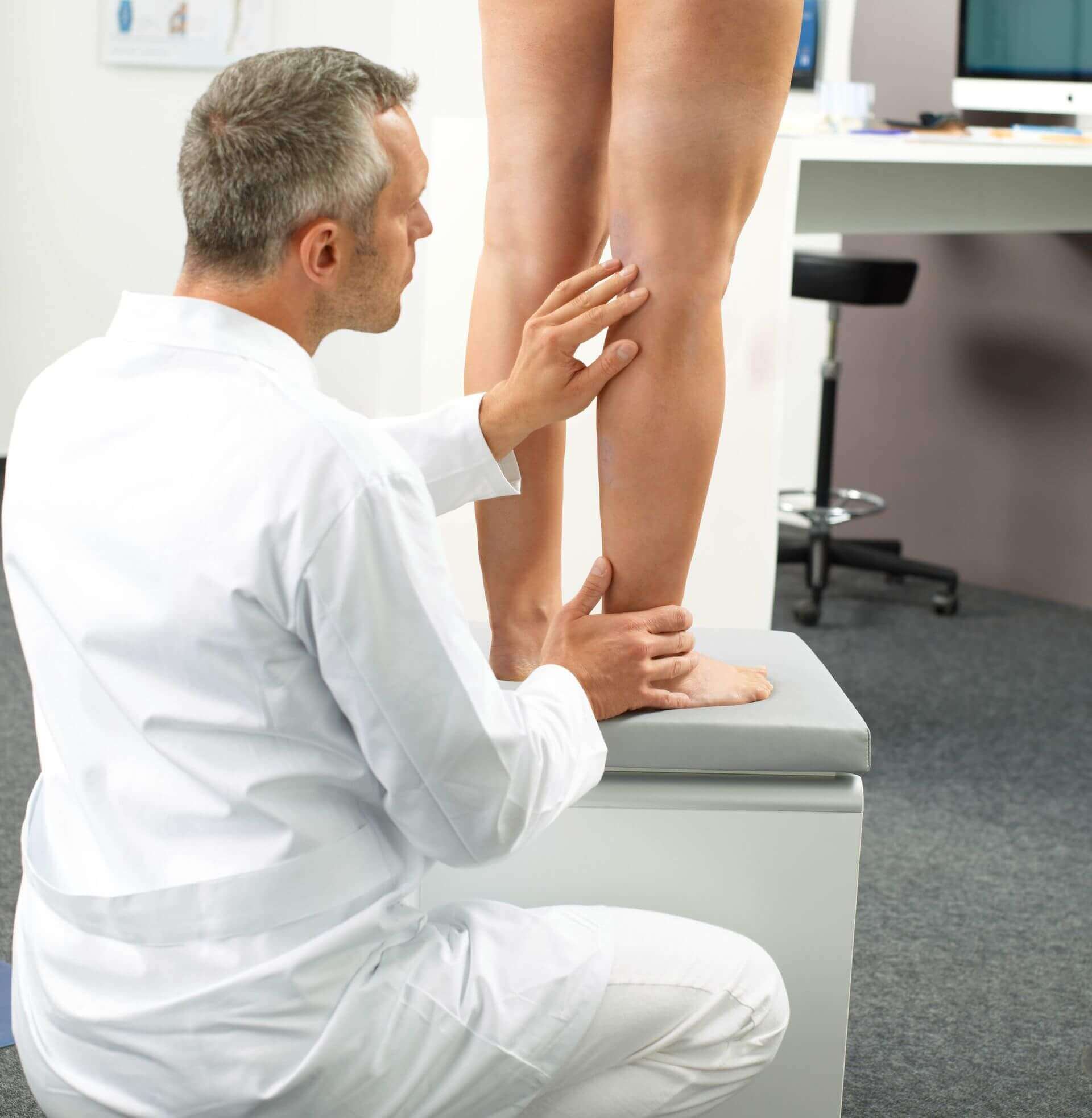
Fluid in the legs: when is it lymphedema?
Heavy, swollen legs can be indicators of a serious condition
A hot summer’s day, many hours of standing or pregnancy can cause swelling in the legs. This is nothing to worry about if it remains an exception. However, if your feet swell regularly or only on one side, this may be a sign of lymphedema. If the condition is recognized early, it can be effectively managed. Find out in our article what an edema is exactly, how it develops and how to recognize the signs.
Edema develops when lymphatic fluid builds up and no longer drains properly, resulting in heavy, tired, swollen legs and feet. The skin can be under uncomfortable tension, clothing and jewelry can leave indentations. Restricted movement is also possible.
All this is not only very uncomfortable – edema is painful and can have serious consequences. After all, the lymphatic system is very important for our immune system.
What does the lymphatic system do?

The lymphatic system is a fine network of many channels, the body’s own filtration and detoxification station in a way. Every day, it produces two to three liters of lymphatic fluid (also known as lymph), which is used to clean the tissue between the cells of pathogens, proteins, cell debris and bacteria. If drainage of lymph no longer works as usual, the fluid gets into the surrounding tissue, making it appear thicker and softer. The more lymphatic fluid enters the tissue, the firmer and more painful the edema will become. This is a huge strain on your skin. It is therefore all the more important that you care for your skin properly because it is easier for pathogens to get into cracked skin. Small injuries like a cut or scrape, for example, can easily become infected – resulting in additional damage to the lymphatic system.
What are the causes of edema in the leg?
If impaired lymphatic drainage is hereditary, we refer to it as a primary lymphedema. The lymph vessels may, for example, be too narrow, too wide or there may not be enough of them. A malformation of lymph nodes can also cause lymphedema to develop later on. About 80 per cent of patients suffering from lymphedema are women. First signs usually develop during puberty, between the ages of 20 and 30 or during pregnancy. A primary lymphedema generally starts away from the body’s center: in almost all cases, both feet are affected first.
If only one leg is swollen, this may be a sign of a secondary lymphedema. It initially develops close to the body’s center – i.e. on a leg or arm, usually after surgery or radiation treatment for cancer. However, accidents, inflammation, parasites or other injuries can also damage the lymphatic system and cause an edema later on.
Edemas in the legs: it may be lipedema
If the circumference of the thighs and buttocks increases relatively spontaneously on both sides, it may be lipedema: a condition causing uneven fat distribution in the body, also known as “saddle bag phenomenon”. Reasons can include phases of hormonal change during puberty or pregnancy, a lack of testosterone or simply a congenital predisposition. If left untreated, lipedema will continue to progress through numerous stages, with the leg circumference constantly increasing, ultimately leading to additional fluid retention. While the lymphatic system can continue to work normally in the first few years, the growing pressure in the leg will have a detrimental effect on the lymph vessels. This will increasingly affect lymph flow. That is why many patients who suffer from untreated lipedema will also develop lymphedema sooner or later. In this case, we refer to it as lipedema with secondary lymphedema.

When to go to the doctor
Lymphedema cannot be healed. But the good news is that the sooner it is recognized, the more effectively it can be managed – which slows down the progression of the condition. Your physician will explain treatment options and prescribe compression stockings, such as VenoTrain curaflow. Self-management is an important component of treatment, as is regular, targeted exercise.
It is important that you know for sure early on so you can start treatment. Only a physician can give you a reliable diagnosis. So, if your legs or feet are swollen regularly, we recommend you make an appointment with your family doctor or a lymphology or phlebology specialist.
ARE YOU UNSURE WHETHER YOU HAVE EDEMA?
Our self-test will provide some guidance.